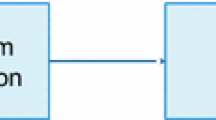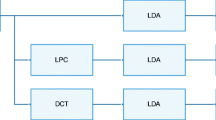Abstract
During the gas tungsten arc welding of nickel-based superalloys, the secondary phases such as Laves and carbides are formed in final stage of solidification. But, other phases such as γ″ and δ phases can precipitate in the microstructure, during aging at high temperatures. However, it is possible to minimize the formation of the Nb-rich Laves phases and therefore reduce the possibility of solidification cracking by adopting the appropriate welding conditions. This paper aims at the automatic microstructurally characterizing the kinetics of phase transformations on an Nb-base alloy, thermally aged at 650 and 950 °C for 10, 100 and 200 h, through backscattered ultrasound signals at frequency of 4 MHz and dual tree complex wavelet transform (DTCWT)-based feature extraction technique. The feature set comprises of statistical attributes (such as variance, skewness and kurtosis) extracted from the complex wavelet coefficients which are obtained using the DTCWT decomposition of a backscattered ultrasound signal. Also, the performance of the proposed feature extraction technique is compared with the conventional discrete wavelet transform. Finally, these features are fed to the probabilistic neural network (PNN) and radial basis function classifiers to automatic microstructural classification. The training process of these networks depends on the selection of the smoothing parameter of the networks’ activation function in a hidden layer. In this article, we introduce the application of the Bees Algorithm to the automatic adaptation of smoothing parameters. The proposed feature extraction technique coupled with the optimized PNN yielded the highest average accuracy of 96 and 83 %, respectively, for thermal aging at 650 and 950 °C. Thus, the proposed processing system provides high reliability to be used for microstructure characterization through ultrasound signals.







Similar content being viewed by others
References
Boser O (1979) The behavior of inconel 625 in a silver environment. Mater Sci Eng 41(1):59–64
Kohl H, Peng K (1981) Thermal stability of the superalloys Inconel 625 and Nimonic 86. J Nucl Mater 101(3):243–250
Thomas C, Tait P (1994) The performance of Alloy 625 in long-term intermediate temperature applications. Int J Press Vessels Pip 59(1–3):41–49
Cieslak M (1991) The welding and solidification metallurgy of alloy 625. Weld J 70(2):49–56
Cieslak M, Headley T, Romig A (1986) The welding metallurgy of HASTELLOY alloys C-4, C-22, and C-276. Metall Trans A 17(11):2035–2047
Yang J, Zheng Q, Sun X, Guan H, Hu Z (2006) Formation of μ phase during thermal exposure and its effect on the properties of K465 superalloy. Scripta Mater 55(4):331–334
Dupont J, Banovic S, Marder A (2003) Microstructural evolution and weldability of dissimilar welds between a super austenitic stainless steel and nickel-based alloys. Weld J 82(6):125–156
de Albuquerque V, de Macedo Silva E, Pereira Leite J, de Moura E, de Araújo Freitas V, Tavares J (2010) Spinodal decomposition mechanism study on the duplex stainless steel UNS S31803 using ultrasonic speed measurements. Mater Des 31(4):2147–2150
de Albuquerque V, Melo T, de Oliveira D, Gomes R, Tavares J (2010) Evaluation of grain refiners influence on the mechanical properties in a CuAlBe shape memory alloy by ultrasonic and mechanical tensile testing. Mater Des 31(7):3275–3281
de Macedo Silva E, de Albuquerque V, Leite J, Varela A, Moura E, Tavares J (2009) Phase transformations evaluation on a UNS S31803 duplex stainless steel based on nondestructive testing. Mater Sci Eng A 516(1–2):126–130
de Araújo Freitas V, Normando P, de Albuquerque V, de Macedo Silva E, Silva A, Tavares J (2011) Nondestructive characterization and evaluation of embrittlement kinetics and elastic constants of duplex stainless steel SAF 2205 for different aging times at 425°C and 475°C. J Nondestr Eval 30(3):130–136
Normando P, Moura E, Souza J, Tavares S, Padovese L (2010) Ultrasound, eddy current and magnetic Barkhausen noise as tools for sigma phase detection on a UNS S31803 duplex stainless steel. Mater Sci Eng A 527(12):2886–2891
Vieira A, de Moura E, Gonçalves L, Rebello J (2008) Characterization of welding defects by fractal analysis of ultrasonic signals. Chaos Solitons Fractals 38(3):748–754
de Moura E, Normando P, Gonçalves L, Kruger S (2011) Characterization of cast iron microstructure through fluctuation and fractal analyses of ultrasonic backscattered signals combined with classification techniques. J Nondestr Eval 31(1):90–98
Vieira A, de Moura E, Gonçalves L (2010) Fluctuation analyses for pattern classification in nondestructive materials inspection. EURASIP J Adv Signal Process 2010(1):262869
Freitas V, Albuquerque V, Silva E, Silva A, Tavares J (2010) Nondestructive characterization of microstructures and determination of elastic properties in plain carbon steel using ultrasonic measurements. Mater Sci Eng A 527(16–17):4431–4437
de Albuquerque V, Filho P, Cavalcante T, Tavares J (2010) New computational solution to quantify synthetic material porosity from optical microscopic images. J Microsc 240(1):50–59
Albuquerque V, Tavares J, Cortez P (2010) Quantification of the microstructures of hypoeutectic white cast iron using mathematical morphology and an artificial neural network. IJMMP 5(1):52
de Albuquerque V, de Alexandria A, Cortez P, Tavares J (2009) Evaluation of multilayer perceptron and self-organizing map neural network topologies applied on microstructure segmentation from metallographic images. NDT E Int 42(7):644–651
de Albuquerque V, Cortez P, de Alexandria A, Tavares J (2008) A new solution for automatic microstructures analysis from images based on a backpropagation artificial neural network. Nondestruct Test Eval 23(4):273–283
Papa J, Nakamura R, de Albuquerque V, Falcão A, Tavares J (2013) Computer techniques towards the automatic characterization of graphite particles in metallographic images of industrial materials. Exp Syst Appl 40(2):590–597
Nunes T, de Albuquerque V, Papa J, Silva C, Normando P, Moura E, Tavares J (2013) Automatic microstructural characterization and classification using artificial intelligence techniques on ultrasound signals. Exp Syst Appl 40(8):3096–3105
de Albuquerque V, Silva C, Normando P, Moura E, Tavares J (2012) Thermal aging effects on the microstructure of Nb-bearing nickel based superalloy weld overlays using ultrasound techniques. Mater Des 36:337–347
de Albuquerque V, Barbosa C, Silva C, Moura E, Filho P, Papa J, Tavares J (2015) Ultrasonic sensor signals and optimum path forest classifier for the microstructural characterization of thermally-aged inconel 625 alloy. Sensors 15(6):12474–12497
Iwashita A, Papa J, Souza A, Falcão A, Lotufo R, Oliveira V, de Albuquerque V, Tavares J (2014) A path- and label-cost propagation approach to speedup the training of the optimum-path forest classifier. Pattern Recogn Lett 40:121–127
Papa J, Falcão A, de Albuquerque V, Tavares J (2012) Efficient supervised optimum-path forest classification for large datasets. Pattern Recogn 45(1):512–520
Vejdannik M, Sadr A (2015) Application of linear discriminant analysis to ultrasound signals for automatic microstructural characterization and classification. J Signal Process Syst. doi:10.1007/s11265-015-1029-x
Thomas M, Das M, Ari S (2015) Automatic ECG arrhythmia classification using dual tree complex wavelet based features. AEU Int J Electron Commun 69(4):715–721
Shankar V, Bhanu Sankara Rao K, Mannan S (2001) Microstructure and mechanical properties of Inconel 625 superalloy. J Nucl Mater 288(2–3):222–232
Schölkopf B, Smola A (2002) Learning with kernels. MIT Press, Cambridge, MA
Duda R, Hart P, Stork D (2001) Pattern classification. Wiley, New York
Faragallah O (2013) Efficient video watermarking based on singular value decomposition in the discrete wavelet transform domain. AEU Int J Electron Commun 67(3):189–196
Kingsbury N (2001) Complex wavelets for shift invariant analysis and filtering of signals. Appl Comput Harmonic Anal 10(3):234–253
Jaynes E, Bretthorst G (2003) Probability theory. Cambridge University Press, Cambridge, UK
Pham DT, Ghanbarzadeh A, Koc E, Otri S, Rahim S, Zaidi M (2005) The Bees Algorithm. Technical note. Manufacturing Engineering Centre, Cardiff University, UK
Pham DT, Ghanbarzadeh A, Koc E, Otri S, Rahim S, Zaidi M (2006) The Bees Algorithm, a novel tool for complex optimisation problems. In: Proceedings IPROMS conference, pp 454–456
Specht D (1991) A general regression neural network. IEEE Trans Neural Netw 2(6):568–576
Chtioui Y (1998) Conjugate gradient and approximate Newton methods for an optimal probabilistic neural network for food color classification. Opt Eng 37(11):3015
Mao K, Tan K, Ser W (2000) Probabilistic neural-network structure determination for pattern classification. IEEE Trans Neural Netw 11(4):1009–1016
Gorunescu F, Gorunescu M, El-Darzi E, Gorunescu S (2005) An evolutionary computational approach to probabilistic neural network with application to hepatic cancer diagnosis. IEEE symposium on computer-based medical systems, pp 461–466
Zhong M, Coggeshall D, Ghaneie E, Pope T, Rivera M, Georgiopoulos M, Anagnostopoulos G, Mollaghasemi M, Richie S (2007) Gap-based estimation: choosing the smoothing parameters for probabilistic and general regression neural networks. Neural Comput 19(10):2840–2864
Demuth H, Beale M (1998) Neural network toolbox for use with MATLAB. MathWorks, Inc, Natick, MA
Haykin S (1994) Neural networks. Macmillan, New York
Chen J, Shi Y, Shi S (1999) Noise analysis of digital ultrasonic nondestructive evaluation system. Int J Press Vessels Pip 76(9):619–630
Acknowledgments
The first author thanks from Victor Hugo C. de Albuquerque and is also grateful for his help in providing the experimental dataset.
Author information
Authors and Affiliations
Corresponding author
Rights and permissions
About this article
Cite this article
Vejdannik, M., Sadr, A. Automatic microstructural characterization and classification using dual tree complex wavelet-based features and Bees Algorithm. Neural Comput & Applic 28, 1877–1889 (2017). https://doi.org/10.1007/s00521-016-2188-9
Received:
Accepted:
Published:
Issue Date:
DOI: https://doi.org/10.1007/s00521-016-2188-9




